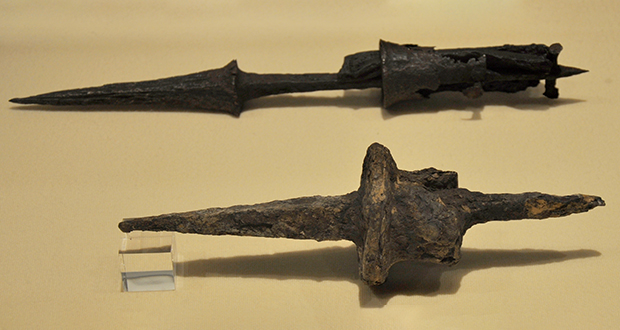26Biological Weapon

In medieval times, corpses of sick people were used as catapult ammunition, as a form of biological weapon.
27. When the Romans first encountered war elephants, they used tow ropes attached to chariots to bind their legs and topple them much like the Rebels on Hoth in Star Wars.
28. The Urumi is a flexible whip sword that is no longer used in battle. It is still practiced as an extremely dangerous martial art weapon in India.
29. In the 14th century, ships would catapult beehives onto the decks of enemy ships to clear the way for boarding parties.
30. A weapon of war called a Scythed Chariot consisted of spinning blades powered by horses whose purpose was to saw the legs off of the enemy soldiers.
Latest FactRepublic Video:
15 Most Controversial & Costly Blunders in History
31Goedendag

A Flemish medieval polearm, which is essentially an elongated club with a spearhead, is named Goedendag, literally meaning "good day" in English.
32. Due to the advanced metallurgy of the ancient Chinese, some of the weapons held by the Terracotta Army (after 2,200 years underground) were still sharp, rust-free, and shiny once a thin oxide layer was removed.
33. A spiked ball at the end of a chain is a 'ball and chain flail', not a morning star (which has spikes but no chain). Despite their popularity in fiction, there is little historical evidence that ball-and-chain flails ever saw widespread use.
34. The Helepolis was a 130-feet multi-story siege tower equipped with 16 catapults, eight wheels, and a 3400-man crew.
35. The pike/spear called the sarissa in Alexander’s army actually weighed around 12-15 pound and was 15-18 feet long.
36Crazing Honey

In the 1st century B.C., the Heptacomitae weaponized “crazing honey” for use against the Romans. The Romans consumed the honey and suffered mental derangement which allowed the Heptacomitae to easily overrun them.
37. Persian soldiers attacking a Roman-occupied city may have been the first to use weaponized chemicals in combat. The Romans were met with a wall of noxious black smoke that turned into acid in their lungs.
38. Ancient Egyptian cat goddess Mafdet was said to have ripped out the hearts of criminals before placing them at the pharaoh’s feet, the same way cats today bring their owners mice or birds they have hunted. “Mafdet’s Claw” was an Ancient Egyptian execution weapon named after her.
39. Tsujigiri or “crossroad killing” was a Samurai practice whereby they would test the sharpness of their new katana by attacking a random passerby.
40. In 1974, a Norwegian student visited the Lendbreen ice patch looking for historical artifacts. He discovered a spear from the Viking age. More than 1000 years old, it had been preserved in the ice and remains one of the best examples of these weapons know to date.




#18 – burning glass. This is taken from the source that the author himself/herself cited “ An experiment to test this theory was carried out by a group at the Massachusetts Institute of Technology in 2005. It concluded that although the theory was sound for stationary objects, the mirrors would not likely have been able to concentrate sufficient solar energy to set a ship on fire under battle conditions.[2]